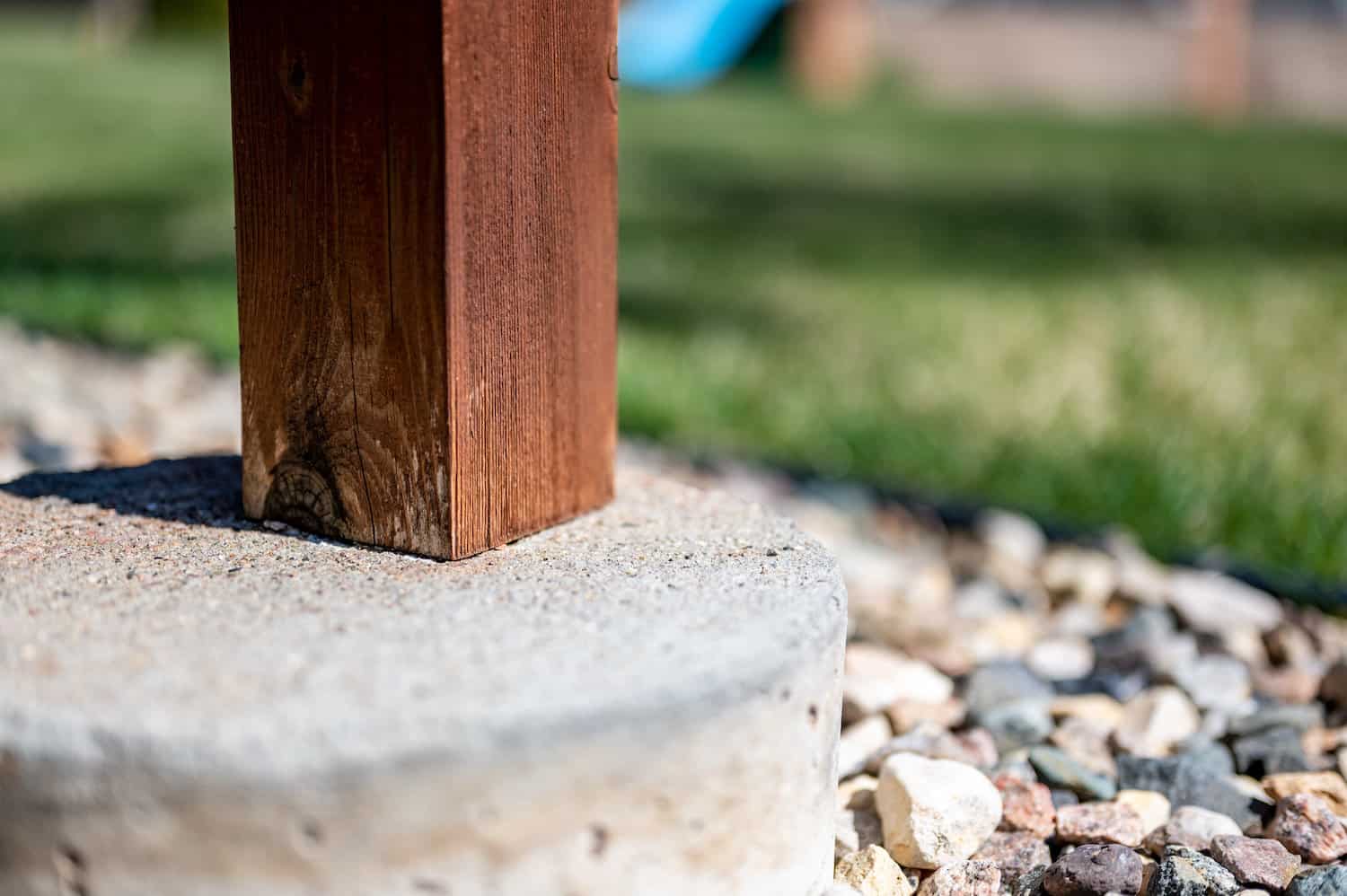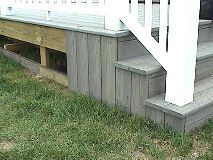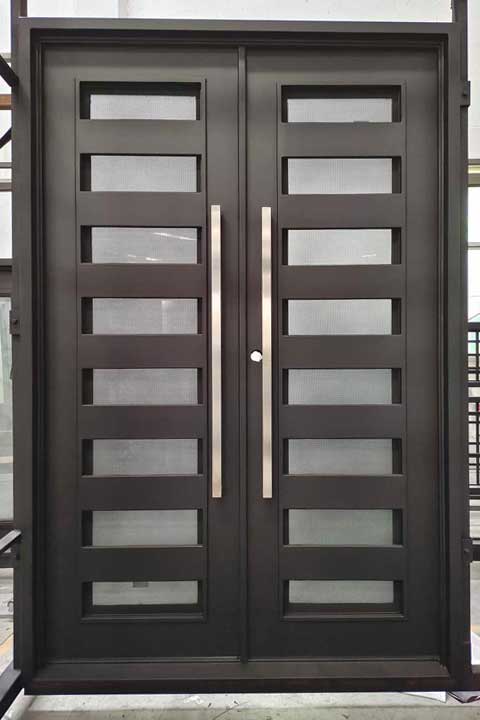How Do You Hide A Pier And Beam?
Hiding a pier and beam foundation can be a challenge, especially if it is in an area where it is visible. A pier and beam foundation is a structure that is built on columns or piers that are sunk into the ground, with a beam running across them to support the weight of the building. This type of foundation is often used for homes or other structures in areas that have unstable soil, as the pier and beam foundation allow the structure to move with the ground. Hiding a pier and beam foundation can be done in a few different ways, such as landscaping, building enclosures, or using building materials to disguise the structure.
Understanding a Pier and Beam Foundation
Pier and beam foundations are a popular choice for many homes, as they allow for a certain amount of flexibility when building. This type of foundation is built using posts and beams, which are arranged in a grid pattern. The posts are placed directly into the ground and the beams are connected to them, forming the frame of the foundation. This type of foundation is ideal for areas with soil that doesn’t have a solid foundation or is prone to shifting.
However, if you’re looking to hide a pier and beam foundation, the process can be a bit tricky. One way to do this is by using a façade, such as brick or stone, to cover the posts and beams. This will give the home an aesthetically pleasing look and help to protect the foundation from the elements. Additionally, you can also incorporate landscaping to help hide the foundation, such as trees, shrubs, and other plants.
No matter which option you choose, it’s important to ensure that the foundation is well-maintained and inspected regularly. This will ensure that any potential problems are caught quickly and addressed before they become more serious. With the right maintenance and care, a pier and beam foundation can last for many years.
Advantages of a Pier and Beam Foundation
When constructing a home, one of the most important elements is the foundation. For many homeowners, a pier and beam foundation is the preferred choice due to its numerous advantages. These structures offer a high level of flexibility and stability, as well as the ability to easily hide plumbing and wiring, which can be difficult to do with other types of foundations. Additionally, a pier and beam foundation is less expensive and easier to repair than slab foundations.
These unique foundations are also great for areas that experience heavy rains and flooding, as they provide a greater level of elevation and stability. It’s also easier to make adjustments to the elevation of the pier and beam foundation, so it can be tailored to fit the terrain of your property. Furthermore, these structures are well-suited for properties with sloping ground, as they can be adjusted to level the structure.
Another major advantage of using a pier and beam foundation is that it’s much easier to inspect and repair. This is because the individual beams can be easily removed and replaced, making it simpler to identify and fix any potential problems. The beams also provide a greater level of ventilation, which can help prevent any mold or mildew buildup.
Overall, the pier and beam foundation is an excellent choice for homeowners. They provide a level of flexibility, stability, and affordability that is difficult to find with other types of foundations. Plus, it’s much easier to hide plumbing and wiring as well as make repairs, and adjust the foundation’s elevation.
Disadvantages of a Pier and Beam Foundation
A pier and beam foundation is a common type of foundation used in residential construction. While it offers several advantages, there are also some disadvantages that you should be aware of. One of the drawbacks of a pier and beam foundation is that it is visible from the outside. This can be an eyesore, depending on the location of the house and the surrounding landscape. Additionally, since the foundation is exposed, it can become a target for pests and other animals looking for shelter and food.
Another issue with the pier and beam foundation is that it can be more difficult to maintain and repair. Since the foundation is exposed, it is more vulnerable to the elements. It is also difficult to inspect and repair any structural issues since you will need to crawl underneath the house to do so.
Finally, another issue is that a pier and beam foundation is more expensive to build than other types of foundations. This is because it requires more labor and materials, and the construction process can take longer.
Fortunately, there are a few ways to hide a pier and beam foundation if you want to maintain the aesthetic of your home. You can use vegetation like shrubs or trees to conceal the foundation, or you can install a stone or brick wall. Additionally, you can use a retaining wall to raise the grade of the ground around the house and conceal the foundation.
Preparing to Hide a Pier and Beam
Covering a pier and beam is an effective way to conceal an unsightly foundation while preserving the structural integrity of the home. The process of hiding a pier and beam is not as difficult as it may seem. With a few simple steps and the right materials, you can have your foundation hidden in no time at all. To begin, it’s important to understand the basics of pier and beam foundations and what materials are needed to complete the job.
Pier and beam foundations are typically made of steel, concrete, or wood. They are built in an alternating pattern, where the support beams are placed on top of the piers, forming a stable foundation. This type of foundation is used to provide stability and support to a home. To hide the foundation, you will need to use materials that can cover the piers and beams without compromising the structural integrity of the home. This could include brick, stucco, siding, or stone veneer.
Once you have the materials needed, you can start the process of hiding your pier and beam. Begin by cleaning the area around the foundation and removing any debris. This will ensure that the materials adhere to the foundation properly. Then, use a combination of adhesive and fasteners to secure the materials to the foundation. Once the materials are securely attached, you can use a sealant to further protect the foundation from the elements.

Credit: permapier.com
Methods to Hide a Pier and Beam
When it comes to hiding a pier and beam, there are several options available. From enclosing the entire support structure to using landscaping to mask the structure, it is possible to find a solution that is both aesthetically pleasing and functional. Here are some of the most popular methods for hiding a pier and beam:
1. Enclosing the Entire Structure – One of the most effective ways to hide a pier and beam is to fully enclose the structure with a variety of materials, such as wood, metal, stone, or brick. This method provides a complete solution to hiding the support structure, and can also provide additional storage or living space.
2. Landscaping – Using landscaping to hide the structure is a popular option for homeowners. Strategically placed shrubs, trees, and flowers can provide an eye-catching aesthetic as well as function to hide the pier and beam.
3. Hiding the Structure With a Deck, Patio, or Other Feature – Hiding the pier and beam with a deck, patio, or other outdoor feature is another popular option for homeowners. This provides a practical solution to hiding the structure, while also providing usable space.
No matter which method you choose to hide a pier and beam, it is important to ensure that the structure is still adequately supported. With careful planning and consideration, it is possible to find a solution that provides both practicality and aesthetics.
Pros and Cons of Hiding a Pier and Beam
Hiding a pier and beam can be a great way to improve the aesthetic of a home by concealing the structural components. It also creates more space in a room by allowing the homeowner to use the area beneath the beams for storage or other purposes. However, there are pros and cons of hiding a pier and beam that must be considered before taking the plunge.
The primary benefit of hiding a pier and beam is the improved visual appeal of a room. When concealed, the beams blend in with the walls and ceiling, creating a seamless look. This can be a great way to give a room a modern, finished look. Furthermore, hiding a pier and beam can create more usable space in a room by allowing the homeowner to use the area beneath the beams for storage or other purposes.
On the other hand, hiding a pier and beam can be costly. Depending on the size and complexity of the project, the cost can range from a few hundred to several thousand dollars. Additionally, hiding a pier and beam often requires removing drywall and other components, which can create a mess and can be time-consuming to clean up.
Maintenance and Care for a Hidden Pier and Beam
When it comes to home maintenance, few projects are as daunting as hiding a pier and beam. This complex system of support beams and posts is responsible for providing a strong foundation for your home and is also important in protecting it from the elements. Fortunately, with proper maintenance and care, hiding a pier and beam can be easier than you think.
Before you attempt to hide your pier and beam, it is important to ensure that the structure is in good condition. Inspect the system for any signs of wear and tear, and make any necessary repairs. If your pier and beam are severely damaged, it may be necessary to replace it completely. Additionally, it is important to make sure that the structure is securely anchored to the ground, and that all connections and supports are securely fastened.
Once the structure is in good condition, you can begin the process of hiding it. This is usually done by building a false wall, or by covering the pier and beam with landscaping materials. In either case, make sure that the materials used are of the highest quality, as they will be exposed to the elements over time. Additionally, it is important to make sure that the materials are securely fastened to the pier and beam and to use a waterproof sealant to protect the structure from moisture.
Troubleshooting Common Issues with a Hidden Pier and Beam
Though pier and beam foundations are designed to last a lifetime, they are not completely immune to wear and tear over time. The good news is that there are ways to hide the pier and beam to keep it looking neat. This article will cover common issues that can arise with a hidden pier and beam and solutions to address them.
Firstly, the pier and beam must be properly secured in order to properly conceal it. This is usually done by using a steel plate or concrete block and then bolting it securely to the foundation. This ensures that the pier and beam is secure and will not move even with extreme weather or soil changes.
Another common issue is that the pier and beam can become exposed due to erosion of the soil around the foundation. This can be solved by installing a protective layer of gravel, sand, or other material around the foundation. This will keep the pier and beam from becoming exposed and will also guard against further erosion.
Lastly, it is important to check for any signs of deterioration or damage to the pier and beam. If the pier and beam appears to be weakened or structurally unsound, it is best to replace it before any further damage is caused. It is also important to inspect the area for any signs of pests or termites, as these can cause further damage to the foundation.
Conclusion
Hiding a pier and beam foundation can be a difficult challenge, especially when the house has already been built. With a bit of creativity and some careful planning, however, it is possible to hide a pier and beam foundation with landscaping, architectural elements, and other techniques. By disguising the foundation, you can give your home an aesthetically pleasing look and free up valuable outdoor space.






